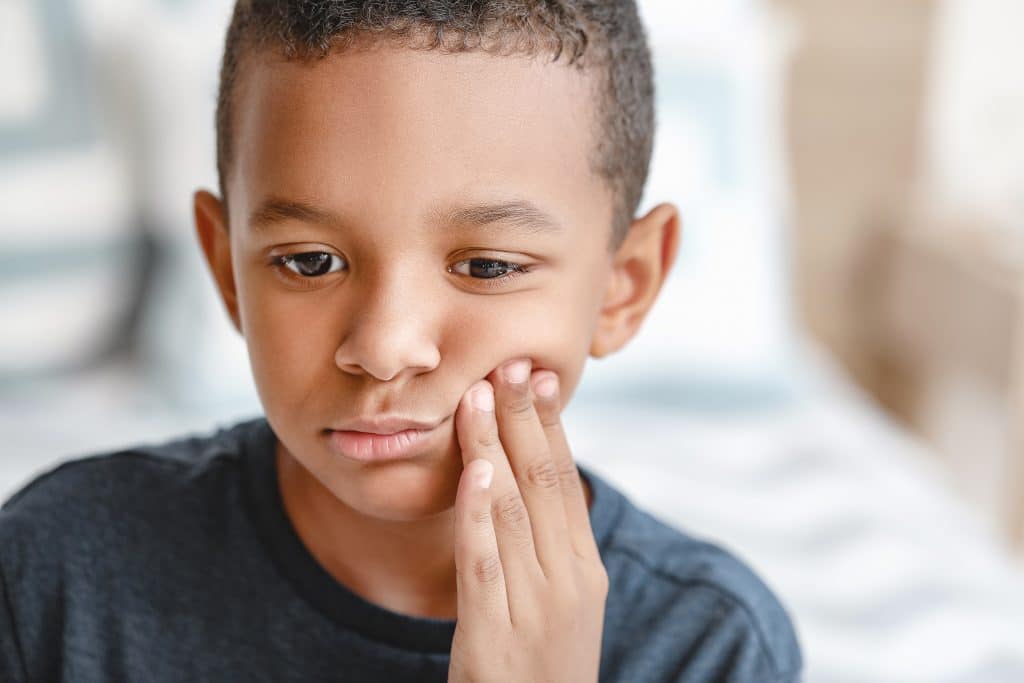Emergency Pediatric Dentistry

While the technical definition for a dental emergency is any condition that compromises the tooth's structure or causes persistent oral bleeding or severe pain, sometimes little bumps can cause bleeding and pain and can be quite scary to both child and parent. At Austin Kids Teeth in Austin, Buda, Bastrop, and Belterra, Texa, we can assist you with determining which situations are true emergencies and then can help to treat all of your child’s dental needs, including unexpected trauma and pain.
Pediatric Dental Emergencies
Here are some of the most common types of pediatric dental emergencies and what you can do in the meantime to help your child get comfortable until they see the dentist.
- Broken or Chipped Tooth: It's no secret that children are more prone to falling, and these types of accidents can result in a broken or chipped tooth. Control the bleeding and have your child rinse their mouth with warm water. Make sure they don't have any tooth fragments in their mouth that they could accidentally swallow. Place a cold compress on your child's cheek or lips around the injury to reduce swelling. Remember to bring any tooth fragments with you to the dentist. If you feel the entire tooth has come out, it’s important to let the dentist know if it’s a permanent tooth or a baby tooth. Permanent teeth can be reimplanted in the mouth, but time is of the essence. Research shows that replacing the tooth within 45 minutes is imperative.
- Toothache: Toothache is common in children of all ages and can be caused by tooth fractures, tooth decay, trauma, canker sores, and even something simple like a loose tooth. Impacted food can also cause discomfort in young children, but this can easily be dislodged using a toothbrush, a clean finger, or dental floss.
- Knocked-Out Tooth: This is a very common occurrence with baby teeth but not nearly as common with permanent teeth. Always get the bleeding under control first after a tooth is knocked out and try to determine if it’s a permanent tooth or a baby tooth. You may need to take a picture and text or email it to your dentist for advice. It’s important to address a knocked-out tooth quickly because it may be able to be re-implanted if it’s a permanent tooth. In this case, you need to find the tooth but be careful not to touch the roots, then lightly rinse it off and put it back into the socket. If you can't replace the tooth, put it in a glass of milk, then call the dentist immediately.
- Other Injuries to the Mouth: If your child bites their lip or tongue or sustains an injury to the soft tissues of their mouth, have them rinse their mouth with warm water so you can assess the injury. Apply firm direct pressure to the area using a clean cloth or gauze to control the bleeding, and apply ice to the affected areas to reduce swelling. If the bleeding becomes uncontrollable, call your dentist immediately. Keep in mind that tissues in the mouth do bleed easily, and sometimes, the smallest of cuts can produce a large amount of bleeding. Usually, within a few minutes, it will be clear if you need to contact your dentist immediately.
How to Help Avoid Pediatric Dental Emergencies
Follow these simple tips to help your child avoid dental emergencies:
- Child-proof your house to avoid falls. Commons spots for injuries are coffee tables and bathtubs
- Don't let your child chew on hard ice, unpopped popcorn kernels, or other hard foods, as this can result in broken or chipped teeth.
- Prevent decay and gum disease with regular brushing and flossing and routine dental visits every six months.
- If your child plays contact sports, he or she should always wear a mouthguard.
Call Us for Pediatric Dental Emergencies
A pediatric dental emergency can happen anytime, and being prepared to act may help save your child's teeth and prevent further pain. If you're looking for a knowledgeable, friendly emergency pediatric dentist in Austin and the surrounding areas, Austin Kids Teeth is here to help you preserve your child's smile. Contact us today to schedule a dental appointment if your child has an emergency.
